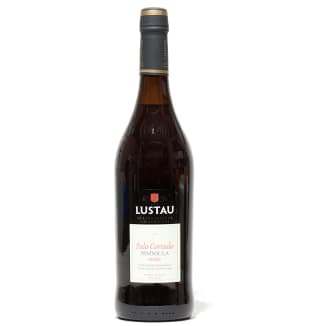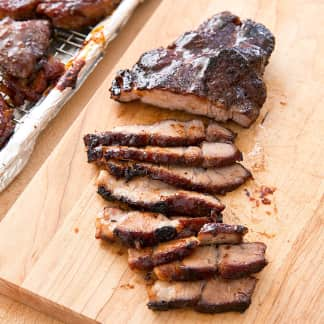Reviews You Can Trust.
See Why.
Sherry
In the test kitchen, we use sherry in a variety of recipes. Does it matter what type and brand you cook with? In a word, yes.
Top Pick

WinnerLustau Palo Cortado Península Sherry
Sign up for the Well-Equipped Cook newsletter
Shop smarter with our ATK Reviews team's expert guides and recommendations.
What You Need to Know
What is Sherry and How is It Made?
Sherry, a wine fortified with brandy, can be made dry or very sweet, with flavors that range from nutty and figlike to citrusy or melon-y. Originating in the Spanish city of Jerez de la Frontera, authentic sherries get their flavor from aging in a series of partially filled casks that let the wine make contact with the air. This oxidation intensifies the flavors, which winemakers balance by adding younger wines and rotating the contents of the barrels from newer to older; this is called the solera process after the set of barrels. The solera system determines when the sherry gets bottled. As a final step, brandy is added. The youngest, least fortified sherry is fino. Older amontillado and palo cortado sherries are more oxidized and use more brandy, making them tawny, higher in alcohol, and earthier.
Spanish Sherry versus American Sherry
All dry Spanish sherries, including our winner, are made from dry palomino grapes; sweet ones use Pedro Ximénez grapes; and medium- or off-dry sherries blend the two. According to Spanish law, all sherry—sweet, dry, or medium—must come from the area around Jerez. In the United States, sherry can be made anywhere and with any grape. Some large-scale American producers speed flavor development by relying on the Tressler system, which involves baking the wine at a low temperature instead of aging it. Taylor Dry Sherry, made from Concord grapes, is baked at 140 degrees until it develops the aroma, flavor, and color that producers are after; usually this takes two to three weeks.
Tasting Various Sherries in a Sweet Application
Recipes more often call for dry sherry, since sweet sherry concentrates as it cooks down and the sweetness overpowers other tastes. We tried Taylor and one sherry cooking wine plus three widely available brands from Spain, including one medium-dry sherry, to determine which we liked best in Marlborough Apple Pie. The “robust,” “toffee”-like flavors of older, darker sherries provided pleasing “earthy” and “nutty” qualities in the pie. Lighter fino sherry, which some compared to fresh apples or green grapes, passed muster but did not rate as high. Salt-laden cooking sherry was our least favorite in our pie. It was a far cry from the “toasty,” “pecan”-like flavors of our winner, Lustau Palo Cortado Península Sherry, which is aged for 11 to 12 years in the solera system.
Tasting Various Sherries in a Savory Application
Since many savory recipes call for sherry, we sampled each brand again in creamed pearl onions. Tasters had a hard time finding sherry flavor in any sample, but this time, cooking sherry was far less objectionable. Our science editor explained that its saltiness worked better in this application. “The cream in the sauce mutes the salty taste, and it’s not unusual for us to like the taste of a little salt in a dish like creamed onions,” he said. But considering that cooking sherry also uses preservatives (potassium sorbate and potassium metabisulfite), we’ll pass. And since we preferred our winning sherry for sipping and in pie and rated it high in pearl onions, we’ll stick with that and add any salt ourselves.
Our Favorite Sherry
Our favorite sherry is the oldest and most expensive product in our lineup, but in this case you get what you pay for.
Everything We Tested
Recommended

WinnerLustau Palo Cortado Península Sherry

Williams & Humbert Dry Sack Medium Sherry

Taylor Dry Sherry
Recommended with reservations

Tio Pepe Fino Muy Seco
Not Recommended

Holland House Sherry Cooking Wine
*All products reviewed by America’s Test Kitchen are independently chosen, researched, and reviewed by our editors. We buy products for testing at retail locations and do not accept unsolicited samples for testing. We list suggested sources for recommended products as a convenience to our readers but do not endorse specific retailers. When you choose to purchase our editorial recommendations from the links we provide, we may earn an affiliate commission. Prices are subject to change.
Reviews You Can Trust
The mission of America’s Test Kitchen Reviews is to find the best equipment and ingredients for the home cook through rigorous, hands-on testing. Have a question or suggestion? Send us an email at atkreviews@americastestkitchen.com. We appreciate your feedback!
Reviews You Can Trust.
See Why.









